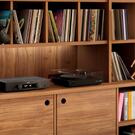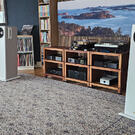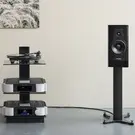Audio Group Denmark burst onto the scene and was impressively quick to create a space among the more interesting hi-fi developers. With brands like Aavik, Børresen, Axxess and Ansuz under their umbrella, they supply equipment in price ranges most people can afford, as well as the wildest of designs in the ultra high-end class, priced accordingly. How about parting with five million for a couple of Børresen speakers? Nevertheless, there are people from various oil-producing countries that do not consider the luxury products to be sufficiently exclusive. The manufacturers keep up with this and develop the products that are in demand and there are a great deal of people who barely notice that they have invested several million in their hi-fi equipment. Some are even able to order customised hi-fi systems with details made from solid gold for no other reason than to make their neighbours jealous.
Located at the other end of the price range, Axxess Fortè 1 is yet another product from the hardworking developers at Audio Group Denmark, who have developed a brand new range of input products, including electronics, speakers and various cables in a very short period of time. Not bad considering that they also presented a good range of other new products at the latest exhibition in Munich.
Axxess is intended to be an affordable entry series, but the intent is still to offer products using much of the technology from the high-end series at a more “normal” price. Axxess Fortè 1 costs around 60K and while this is not exactly pocket money, the products fall in a price range where even minor improvements to sound quality will cost significantly more.
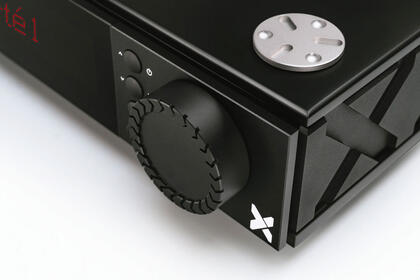
Streaming amplifier
The Axxess Fortè1 enclosure has been designed using composite materials. According to Michael Børresen, aluminium is completely unsuitable as a hi-fi material and they have therefore developed a completely different and very stylish enclosure that stands out positively in the market without using any aluminium. The design is unique but not challenging and is characterised by a large dial and a large display at the front and a tidy arrangement without too many inputs and outputs at the back. Some might feel that there are too few analogue inputs, but with the built-in DAC and streamer, a single analogue input for an RIAA or similar might just be enough? We assume that this was not a random choice and that those who made the decision to keep it simple certainly made sure to sleep on it overnight. Price does, of course, come into it and if you don’t need a great deal of equipment and inputs, you will, at the very least, be able to enjoy not having to pay for equipment you don’t need. Digital inputs comprise one coax, one optic and one USB in. These are in addition to two USB inputs for storage media and, of course, a network port.
A headphone jack has been installed on the front. The sound quality is fairly pleasant and I wanted to properly test it using several different headphones before adding a dedicated headphone amplifier. It plays very well.
If you are looking for an amplifier with a clear and easy-to-read display, you’ve come to the right place. The large display is equipped with red diodes and if you don’t reduce the amount of light by 70, 40 or 10% I think you would still be able to see it from a hundred metres away – even in daylight.
Built-in digital converter
All the amplifiers in the Fortè series are equipped with 1-bit digital converters. This is for the simple reason that the designer feels that, due to various types of distortion, the typical multi-bit converters end up sounding somewhat “digital”. They developed the 1-bit converter themselves to ensure that listeners can enjoy an analogue sound signature regardless of whether the built-in streamer or or one of the digital inputs are used. By ensuring that the circuit has high resistance against noise penetration, it also needs to deliver increased clarity and improved performance. This in turn is intended to provide a relaxed and calm listening experience.
The app used to control the Axxess amplifiers is a variant of the well-known mConnect. It is practical and straightforward when you get used to it, but it can be a bit stubborn and difficult at times. The fix is to swipe it away and relaunch it. It only takes a few seconds to restore contact with the amplifier and connect to the desired music service. Once that is done, it is pretty stable and well-behaved.

Class D
Fortè1 delivers 2x100 watts in 8 ohm. This is the same as the other two amplifiers in the range, but it doesn’t mean it can deliver the same quality. The amplifiers are class D amplifiers from Pascal and are used in several of the Aavik products.
The use of Tesla coils is an interesting and unusual move to remove noise in the amplifier and, if you look at the technical data, the big difference between Fortè 1, 2 and 3 is the number of Tesla coils and Dithering circuits.
Fortè 1 uses 36 active Tesla coils and 72 square and active Tesla coils to lower the amplifier’s noise floor and, finally, 3 Dithering circuits to reduce and minimise noise when digital signals are converted. The use of Tesla coils is a recurring theme in many of the products designed by Michael Børresen. They can, for example, be found in Aavik amplifiers, speaker cables and in Axxess Fortè, so we can speculate as to how much the sound is actually affected by the coils. Interestingly, they still deliver what the designer wants them to do and the sound signature fits well into their product strategy.
Axxess Fortè1 is quiet, calm and relaxed in the way it presents music and how it draws up the vision of the recording studio, stage and distance between musicians. The focus is precise and firm, but without anything getting too clear or edgy. Perhaps it would have behaved the same even without the Tesla coils but that would be difficult to verify.
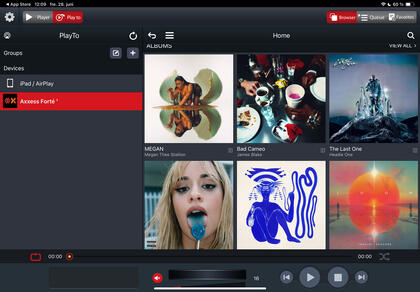
Great music experience
Regardless of the amplifier class, creative circuit solutions and alternative thinking around digital converters, it is nice to be able to state that Axxess Forté1 behaves pretty much as described by the designer and that the sound doesn’t seem very different to how it did when we visited Audio Group Denmark. The Danes are talented and they have the ability to make you believe pretty much anything.
Like then, the amplifier is calm and comfortable to listen to and I would say that the final result is joyfully rich and musical. Like the Naim Uniti Nova PE, which we tested in the last edition, you will not hear anything that indicates class D. Perhaps we can finally stop discussing amplifier classes and instead try to figure out whether or not the amplifier is any good?
I play on a couple of Kerr Acoustic K320s, which are usually run by a Hegel H600. It’s a pretty potent and powerful package, but the Forté1 manages to follow keep up with regard to both control and rhythm – all the way up to volume levels that are rarely used at home. The precision, dynamics and sense of power are not as prominent as with the H600, but I find that the Forté1 plays music in a way that is pretty comfortable and easy to enjoy. Forté3 provides an even deeper and more extensive soundscape, which must probably be attributed to an even lower noise floor, and it lets more of the timbre of the instruments and musical information through. At the same time, it provides greater proximity to the performance but it is easy to be impressed by the Forté1 when we keep half an eye on the price tag.
While it is fun to play songs that bring forth the qualities of the bass, this is not where the most important quality of the amplifier can be found. With such a controlled, precise and heavy bass, it would be easy to think that the reproduction in the midrange and treble focus on the same qualities, but, like Forté3, this range is fairly relaxed and calm and has a focus on the whole, the performance and presentation of the music. There are certainly enough details and hi-fi extras, but these are reproduced without becoming too intrusive or more important than the whole.
This results in impressive processing of voices, perhaps female voices in particular, and a highly credible and lifelike reproduction of wind and string instruments. Just listen to Petter Wettre's saxophone in Annette Askvik's Liberty. It is soulful, highly credible and manages to bring out the natural warmth and tone of the instrument in a beautiful way. You can almost hear how well used the instrument is and how some of the original varnish has worn off in places. At the same time, the soundscape is so broad and deep with plenty of room for vocals, saxophone and the vast amounts of hi-fi extras included in the song. I played the same song last time and, even though it does not produce the same level of goosebumps, the overall music experience is still incredible. The sound signature, however, is highly recognisable, with a midrange that is open, transparent and musical. The amplifier is far from insistent, instead coming across as somewhat warm, rather than cool and analytical.
After experiencing Tool’s fantastic concert at Tons of Rock, the hi-fi version seems to pale a bit, but the Forté1 still manages to produce a very decent music experience. This is thanks to the control and dynamics of the bass. The soundscape behind and around the rhythmically advanced music is not fiercely advanced and everything is presented with a dynamic and transparency that is impressive considering the price range – together with a surprisingly solid, precise and heavy bass. It doesn’t quite bring me all the way back to the grassy fields at Ekeberg, but, as a hi-fi experience, it provides plenty of fun and engagement – and you don’t sunburned or have someone step on your toes.
Musically speaking, the amplifier is pretty versatile and, if you are looking for an amplifier in this price range that can manage anything, you should definitely add it to your wish list – while there are a few great challengers in this price range, I would absolutely take a Forté1 home to test.
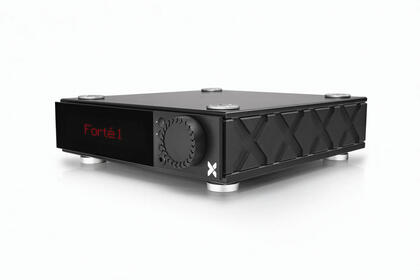
Conclusion
It’s time to curb the scepticism about class D as a technology. The amplification class is far from crucial when it comes to the results you experience at home but provides an indication of whether the amplifiers are great or simply average.
For natural reasons, Axxess Forté1 is not quite at the same level as its big brother, the Forté3, but at half the price it delivers even more of a sound experience for the money and it definitely makes our recommended category.
The designers did a great job with Forté1 and created a design in which every part of the product balances the others. The amplifier can manage most speakers, but, in order for the amplifier to thrive and play with abundance, I would probably look at speakers that are relatively efficient and perhaps avoid large, floor-standing models.

 Vipps oss en gave: 129702
Vipps oss en gave: 129702
